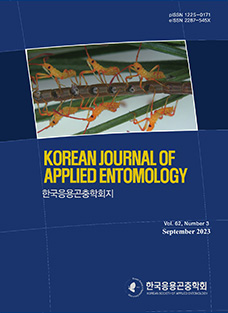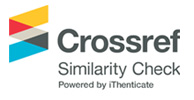The Scaphisomatini genus Baeocera Erichson, 1845 comprises nearly 330 species and subspecies (Löbl, 2025). It is notably species-rich in southeast Asia and many of these species are common in tropical and subtropical moist forest floor litter (Löbl and Smetana, 2021). Yet, they are absent from most of the temperate areas of the Palaearctic region. Therefore, only three species of Baeocera are known from Russia, all only from the Far East. At present, nine species are known from Japan (Ogawa and Löbl, 2013), 15 from Taiwan (Löbl, 2012a), but only 27 species from mainland China (Löbl, 2019), suggesting major gaps in the knowledge of the latter fauna.
The Korean species have been dealt with in Hoshina et al. (2011). Three species are dealt with in their work: Baeocera freyi Löbl, 1966, and the newly described Baeocera choiHoshina and Park, 2011 and Baeocera koreanaHoshina and Park, 2011. Subsequently, Lee et al. (2024) reported Baeocera satana Nakane, 1963 from Korea. A study of recently collected specimens led to recognizing the synonymy of B. choi with B. ventralis Löbl, 1973 and gives occasion to summarize information on the four Korean species of Baeocera.
Materials and Methods
The specimens used in this study are deposited in the Chungnam National University Insect Collection (CNUIC), Daejeon, Korea.
Taxonomic accounts
Tribe Scaphisomatini Casey, 1893
Genus Baeocera Erichson, 1845
Baeocera freyi Löbl, 1966 애호랑밑빠진버섯벌레
The species was based on two specimens, from Purjong, North Korea (holotype) and from Vladivostok, Russia. Subsequently, it was redescribed (Löbl, 1969) and reported from the Chinese Province of Shaanxi (Löbl, 1999) and from South Korea (Hoshina et al., 2011). The species is a member of the B. curtula group (see Löbl, 1992), comprising several species very similar in external characters.
Baeocera koreanaHoshina and Park, 2011 한국애호랑밑빠 진버섯벌레
This species is a member of the B. monstrosa group, proposed by Löbl (1971) for three Sri Lankan and Indian species and at present comprising 17 species. They are characterized by the aedeagi with strongly asymmetrical median lobes and parameres, and a very complex internal sac. Baeocera koreana has the right paramere expanded mesally by a tooth-like process and the left paramere enlarged and lobed. These characters are shared with five other Asian species listed by Löbl (2012b), including B. takizawaiLöbl, 1984 with which B. koreana was compared.
Baeocera satana Nakane, 1963 붉은애호랑밑빠진버섯벌레 (신칭)
The species was described from Japan, and redescribed by Löbl (1969) and Ogawa and Löbl (2013). It was reported from the Chinese Provinces of Guangxi and Yunnan by Löbl (1999, 2019), from the Russian Far East (Maritime Province) by Löbl (2021), and recently from Korea by Lee et al. (2024). The males of this species are notable by their modified metatibiae, a feature shared only with five other Asian species (see Löbl, 1999). The shape of the asymmetrical aedeagus is also diagnostic. Fig. 2C and 3C were published in Lee et al. (2024) and slightly edited here.
Baeocera ventralis (Löbl, 1973) 배애호랑밑빠진버섯벌레 (신칭)
Baeocera bhutanensis Löbl, 1977
Baeocera choiHoshina and Park, 2011, syn. nov.
Korean material examined. 1 male, labelled: KOREA Gyeongbuk Prov., Ulleung-gun, Buk-myeon, Cheonbu-ri, Gwan-eum Island, N37°32'36.02'' E130°55'13.02'' 108 m, 15. VII. 2020, MH Song, sinftig of leaf litter and soil; 1 specimen, labelled: [CB] Eumsung-gun, Eumsung-eub Pyunggok-ri, N36°55'49.6'' E127°42'08.5'' 156 m, KOREA / 2006.II.5. Coll. S.J. Park, S.I. Lee, Y.H. Kim ex. leaf litter Korean Bioresources Collection.
Remarks. Baeocera ventralis was described from Thailand, and its junior synonym B. bhutanensis from Bhutan. The species was subsequently reported only from India, Nepal, and Pakistan (see Löbl, 1984, 1986, 1990, 1992, 2004). Thus, with the Korean records the known distribution exhibits a notable hiatus.
The species is a members of the B. ceylonensis species group (see Löbl, 2012b), defined by the metanepisterna fused with the metaventrite and the aedeagal characters. The median lobe is symmetrical, with weakly sclerotized valves overlapping ostium, the parameres are notched, the internal sac has complex sclerotized structures including a flat flagellum and a flagellar guide sclerite, with the ejaculatory duct permanently extruded, and a basal bunch of sclerotized spines (Fig. 1).
While the extruding, very long ejaculatory duct is shared with species of the B. lenta group, the bunch of spines is a unique feature. Baeocera ventralis is very similar with B. franzi Löbl, 1973 known from Thailand and China and thus possibly also occurring in Korea. The parameral notch situated much more apically in B. franzi provides a reliable mean for identification.
Key to species of Korean Baeocera
-
1. Elytron with basal stria shortened, not joining lateral stria; metaventrite fused with metanepisterna, coarsely punctate ····························································· B. ventralis (Löbl)
-
- Elytron with basal stria entire, joining lateral stria; metaventrite not fused with metanepisterna, laterally very finely punctate or appearing impunctate ····································· 2
-
2. Pronotum and elytra black; antennomere 11 slightly longer than 10; aedeagus with symmetrical parameres ················· ······································································ B. freyi Löbl
-
- Pronotum and elytra brown or reddish-brown; antennomere 11 about 1.5-1.9 times as long as 10; aedeagus with asymmetrical parameres ·························································· 3
-
3. Body length about 1.9-2.0 mm; male metatibiae bearing denticles; aedeagus with long apical process of median lobe and long parameres lacking process or lobes ····················· ······························································ B. satana Nakane
-
- Body length about 2.4-2.6 mm; male metatibiae lacking denticles; aedeagus with very short apical process of median lobe and short parameres bearing processes and lobes ········ ·············································· B. koreana Hoshina and Park










 KSAE
KSAE





